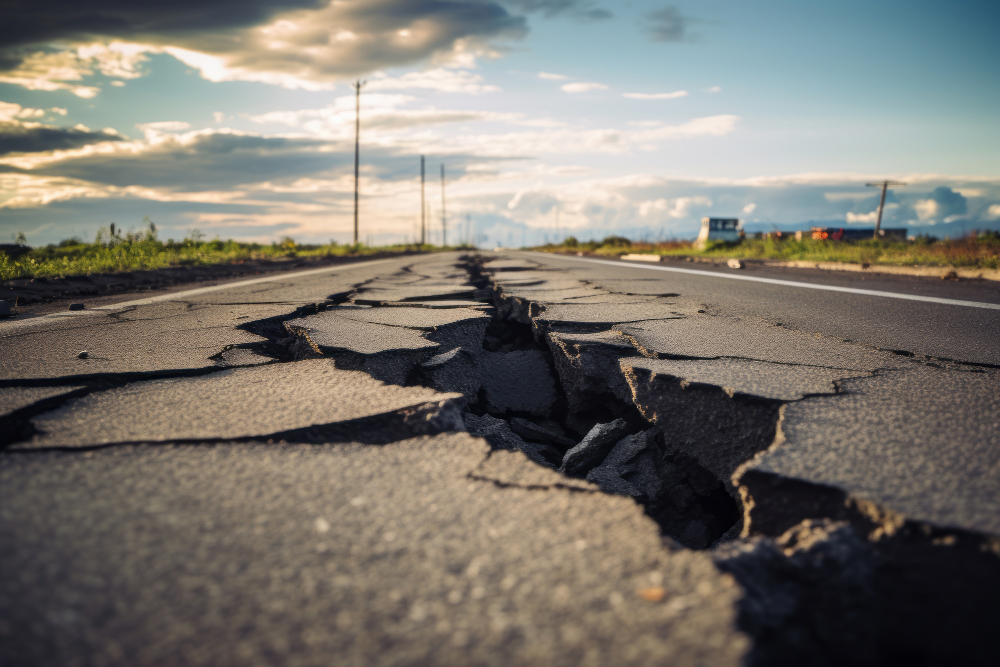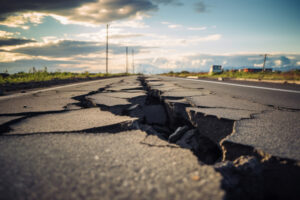
Earthquakes are natural phenomena that have shaped the Earth’s landscape for millions of years. These powerful events result from the release of energy beneath the Earth’s surface, causing the ground to shake. In this comprehensive exploration, we will delve into the mechanics of earthquakes, the role of faults, and the propagation of seismic waves. Specifically, we’ll focus on earthquake occurrences in California, a region notorious for its seismic activity.
The Mechanics of Earthquakes
At its core, an earthquake is a sudden and violent shaking of the ground, typically caused by movements along faults. The Earth’s outer shell, known as the lithosphere, is divided into several tectonic plates. These plates are constantly in motion, driven by the convective currents beneath them. As plates interact, they can either collide, move apart, or slide past each other, creating stress along their boundaries.
Faults and their Types
 Faults are fractures in the Earth’s crust where blocks of rock have moved relative to each other. The movement along these fault lines is what triggers earthquakes. There are three main types of faults:
Faults are fractures in the Earth’s crust where blocks of rock have moved relative to each other. The movement along these fault lines is what triggers earthquakes. There are three main types of faults:
- Normal Faults: These occur when rocks break and move vertically. The hanging wall (the block above the fault) moves downward relative to the footwall (the block below the fault). Normal faults are associated with extensional tectonic forces, where the Earth’s crust is being pulled apart.
- Reverse Faults: In reverse faults, the hanging wall moves upward relative to the footwall. These faults are associated with compressional forces, where the Earth’s crust is being pushed together.
- Strike-Slip Faults: Here, the blocks of rock move horizontally along the fault line. Strike-slip faults are typically associated with lateral movements along transform boundaries, where tectonic plates slide past each other.
The San Andreas Fault and Other Fault Lines in California
California is a hotspot for seismic activity due to its complex tectonic setting. The most famous fault in the region is the San Andreas Fault, a strike-slip fault that extends approximately 800 miles through California. The Pacific Plate and the North American Plate meet along the fault, making it a focal point for earthquake activity.
Apart from the San Andreas Fault, there are several other significant fault lines in California, contributing to the state’s seismic vulnerability. Some notable ones include:
- Hayward Fault: Running through the densely populated San Francisco Bay Area, the Hayward Fault is capable of producing a major earthquake, posing a significant risk to the region.
- Garlock Fault: Located in Southern California, the Garlock Fault runs parallel to the San Andreas Fault and is capable of producing powerful earthquakes.
- Elsinore Fault: Stretching from the Salton Sea to the Pacific Ocean, the Elsinore Fault is a major strike-slip fault that plays a role in the complex tectonic interactions in Southern California.
Seismic Waves and their Characteristics
When an earthquake occurs, it generates seismic waves that radiate outward from the point of rupture. These waves are categorized into two main types: body waves and surface waves.
Body Waves:
- P-waves (Primary or Compressional Waves): These are the fastest seismic waves and can travel through solids, liquids, and gases. P-waves cause the ground to compress and expand in the direction the waves are moving.
- S-waves (Secondary or Shear Waves): S-waves are slower than P-waves and can only travel through solids. They cause the ground to move perpendicular to the direction of the wave, resulting in a side-to-side shaking motion.
Surface Waves:
- Love Waves: These waves move in a side-to-side motion and only affect the Earth’s crust.
- Rayleigh Waves: Rayleigh waves cause both vertical and horizontal ground movement and are responsible for the rolling motion experienced during earthquakes.
The Impact of Earthquakes in California
California is no stranger to seismic events, and the impact of earthquakes in the region can be profound. The densely populated areas, coupled with critical infrastructure, make the state particularly vulnerable to seismic hazards. Notable earthquakes in California history include the 1906 San Francisco earthquake, the 1971 San Fernando earthquake, and the 1994 Northridge earthquake.
Statistics on Earthquakes in California
- Frequency: California experiences thousands of earthquakes each year, although most are too small to be felt. However, the state is also prone to larger, potentially destructive earthquakes.
- Magnitude: The magnitude of earthquakes in California varies, with many falling in the moderate range (Magnitude 5-6). However, larger earthquakes with magnitudes exceeding 7 can and do occur.
- Seismic Hazard Maps: The United States Geological Survey (USGS) regularly updates seismic hazard maps, outlining areas with higher probabilities of experiencing significant earthquakes. These maps help inform building codes and emergency preparedness measures.
Earthquake Preparedness in California
Given the seismic risk in California, earthquake preparedness is of paramount importance. Residents are encouraged to:
- Create Emergency Plans: Develop family emergency plans, including communication strategies and evacuation routes.
- Secure Heavy Objects: Anchor heavy furniture and appliances to prevent them from toppling during an earthquake.
- Building Retrofitting: Retrofit older buildings to meet modern seismic safety standards.
- Emergency Supplies: Maintain emergency supply kits with essentials such as water, food, first aid supplies, and important documents.
Understanding the intricacies of earthquakes, faults, and seismic waves is crucial for mitigating their impact on communities. In California, where seismic activity is a constant reality, proactive measures, public awareness, and earthquake preparedness play pivotal roles in safeguarding lives and property. As technology advances, ongoing research and monitoring efforts continue to enhance our ability to predict, prepare for, and respond to seismic events, ultimately minimizing the potential devastation caused by earthquakes.






